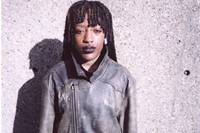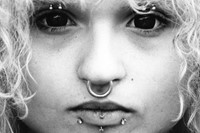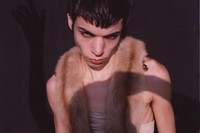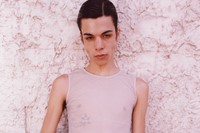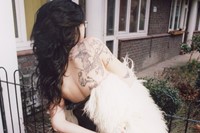“Photography is a way of making myself feel less alien,” says Evan Purdy of his new exhibition, which captures London’s queer community
“Last time I did an interview, it went so dark, and I sounded hopeless,” says photographer Evan Purdy from his home in east London. “Now, I’m conscious I don’t want to add to that hopelessness.” Currently studying Fine Art at Camberwell College of Art, there’s a lot to be pessimistic about – for students, a worsening political and financial climate has led to life on shoestring budgets and diminishing opportunities for creatives. After moving from his home in Manchester in 2020, Purdy immersed himself in London’s queer creative community, making photos that reflected a new generation grappling with a world shaped by the decisions of generations prior. His latest project, I Am Firstly Nothing, captures his gender non-conforming community in large format darkroom prints displayed at south London’s Dilston Gallery, with proceeds going to various LGBTQ+ charities.
There’s a particular unsanitised grit to Purdy’s portraits of youth; each subject is a friend, captured sensitively and authentically, donning their own clothes and striking powerful stances in soulful ownership of their respective identities. Bridging a gap between documentary and fashion photography, Purdy’s magnetic imagery pulls in viewers with a strange sense of desire, and comes loaded with a potent message of self-belief, acting as inspirational totems for people living outside the capital’s liberal bubble. Shooting on location on the streets of east London or in a squat, he eschews the clinical environments of studios in the hopes his subjects take the chains off and forget the lens, capturing an authentic version of the self, unpolished, and imbued with the spirituous emotion of a new generation.
With I Am Firstly Nothing opening on January 13, Evan Purdy sits down to speak about the images featured in his debut exhibition of handmade prints, with all proceeds from the sale of each image going to Papyrus UK, Akt, and Trans Fem Social (TFS).
“Photography is my way of talking to people my age who may be experiencing the same feelings I’m experiencing. I guess it’s a way of making myself feel less alien. I find the world really weird, in enjoyable ways, but also in really scary ways. One way that I can deal with that is by using photography to show people and make them think about how weird the world is, look at how strange the structures are, and look at what that does to the individual. Fear is what keeps these dominant structures alive. It’s a dangerous place we’re making. But on the flip side, I also want to show to people who are in my generation that by looking at these things – by really looking – you can show that when we try to work locally, when we look to our friends, our immediate groups and when we try and look at ourselves, we can make small positive changes.

“My biggest inspiration when I moved to London was the queer community. There wasn’t that big of a scene in Manchester among the young people; I found that people in London were exciting, and kind of brave. People were going to extremes of what they would wear, how they would style their hair, and the way they presented themselves – they knew themselves fully because they were able almost to play an infinite role of characters, knowing that it wouldn’t affect themselves. It didn’t matter how people saw them.
“I think my practice is a bit more like a painter. I tend to create something in order to say something. Many photographers really fall in love with a way of shooting where they’ve got a camera attached to them all the time and are constantly looking for life to throw them something. Whereas I do it in reverse, I always look around for inspiration and ideas. I let that like sit within me, let it stew, and then try and purposefully like create something.
“When I’m about to do a big series, I need one shoot that ignites the process. For this, I started with Willow. I find them super inspiring because they’re always dressed in the most amazing way, but you can’t remember a single piece that they’re wearing – it’s always about a collection of rogue different pieces put together. I wanted the fashion to be a language of its own, and I think the language is most potent when you use real clothes – clothes people wear. There’s a strong social language with fashion. It’s illegal to be naked in public, so even if you like fashion or not, everyone is forced to communicate with fashion constantly.
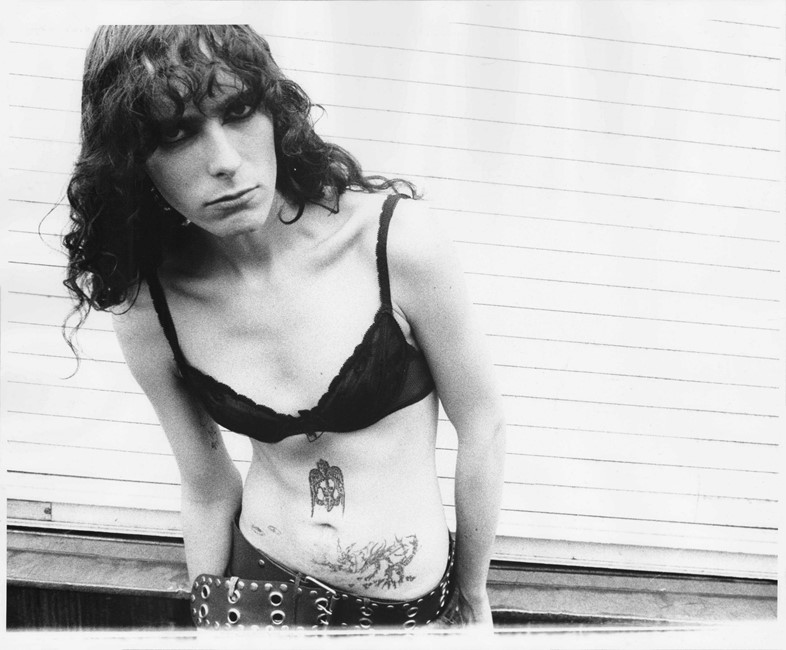
“I normally hand-print everything. I realise it’s sad that people never get to actually see my hand-prints, they only get to see the scanned version, and a lot of people may have only ever seen my work on Instagram, which sucks because it’s such a terrible place. You’re on this landscape that is 30 per cent adverts; we don’t realise that we’re all constantly choosing to be with advertisements. Some of my prints are massive, 20 by 24 inches, all framed and handmade. I want people to slow down. Look at it, get close, and I think you get to see the truer picture.”
I Am Firstly, Nothing by Evan Purdy is on show at Dilston Gallery in London from 13 – 14 January. Proceeds from the sale of prints will be donated to Papyrus UK, Akt, and TFS.

